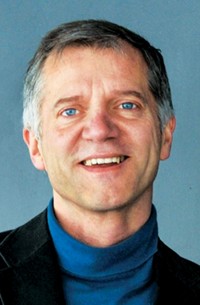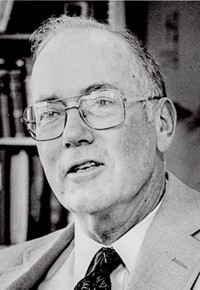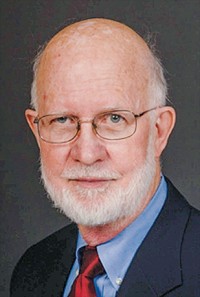Advertisement
Grab your lab coat. Let's get started
Welcome!
Welcome!
Create an account below to get 6 C&EN articles per month, receive newsletters and more - all free.
It seems this is your first time logging in online. Please enter the following information to continue.
As an ACS member you automatically get access to this site. All we need is few more details to create your reading experience.
Not you? Sign in with a different account.
Not you? Sign in with a different account.
ERROR 1
ERROR 1
ERROR 2
ERROR 2
ERROR 2
ERROR 2
ERROR 2
Password and Confirm password must match.
If you have an ACS member number, please enter it here so we can link this account to your membership. (optional)
ERROR 2
ACS values your privacy. By submitting your information, you are gaining access to C&EN and subscribing to our weekly newsletter. We use the information you provide to make your reading experience better, and we will never sell your data to third party members.
People
Paul Lauterbur dies at 77
Nobel Laureate was a developer of magnetic resonance imaging
by Linda Raber
March 30, 2007

Paul C. Lauterbur, 77, professor of chemistry at the University of Illinois, Urbana-Champaign, died on March 27 of kidney disease at his home in Urbana. Lauterbur received the 2003 Nobel Prize in Physiology or Medicine for his pioneering work in the development of magnetic resonance imaging (MRI). He shared the prize with Sir Peter Mansfield of the University of Nottingham, in England.
At the time of his death, Lauterbur was a professor of chemistry, biophysics and computational biology, and bioengineering at the Center for Advanced Study. He also was the Distinguished University Professor of Medical Information Sciences.
Lauterbur developed a rapid method of obtaining noninvasive images of the human body by using magnetic resonance (Nature 1973, 242, 190). The method uses two magnetic fields, one static and one with a gradient. The image is reconstructed by using what is called a "back projection" technique, relying on the relationship between distance and frequency created by a linear field gradient.
"Through his life and his work, Paul Lauterbur exemplified ... creativity, passion, tenacity, and most importantly, commitment to mankind," said Richard Herman, chancellor of the University of Illinois. "Paul's influence is felt around the world every day, every time an MRI saves a life."
Lauterbur, who was born on May 6, 1929, in Sidney, Ohio, received a bachelor???s degree in chemistry in 1951 from Case Institute of Technology, in Cleveland, and a doctorate in chemistry from the University of Pittsburgh in 1962.
He was a professor in the department of chemistry at the State University of New York, Stony Brook, from 1963 to 1985; it was there that he did his Nobel Prize-winning work. He then joined the faculty of medicine at the University of Illinois and was associated with the university's Center for Advanced Study and its Beckman Institute over the past 22 years.
In addition to the Nobel Prize, Lauterbur received the following honors and awards: the Eduard Rhein Foundation Technology Award (2003); the National Academy of Sciences Award for Chemistry in Service to Society (2001); the Kyoto Prize of the Inamori Foundation of Japan, in recognition of lifelong research accomplishments in advanced technology (1994); the Order of Lincoln Medallion, the state of Illinois??? highest award (1992); the Franklin Institute???s Bower Award for Achievement in Science (1990), and the Albert Lasker Clinical Research Award (1984). Lauterbur was a member of the National Academy of Sciences and a Fellow of the American Association for the Advancement of Science and of the American Physical Society. He joined the American Chemical Society in 1952.
Lauterbur is survived by his wife, University of Illinois physiology professor Joan Dawson, and three children.





Join the conversation
Contact the reporter
Submit a Letter to the Editor for publication
Engage with us on Twitter